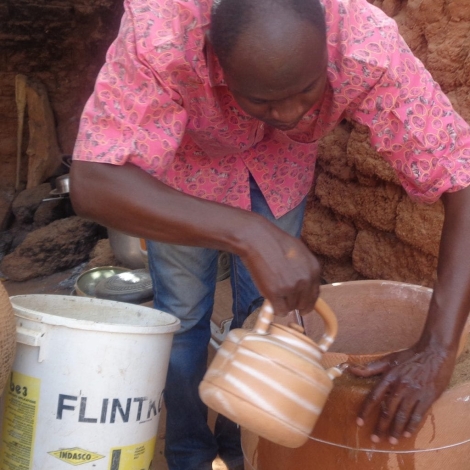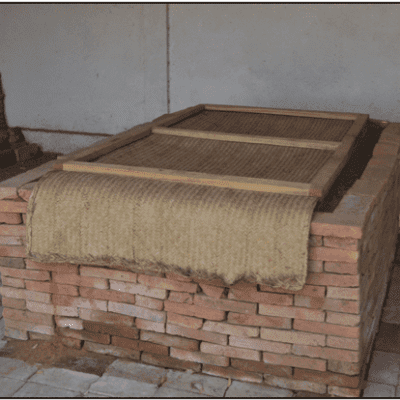Food loss due to lack of effective storage is a global problem. In Sub-Saharan Africa alone, approximately 23 percent of available food is lost or wasted, resulting in up to 15 percent less income for approximately 470 million farmers and others all along the value chain.
Interest in evaporative cooling – an innovative yet old-school solution to the problem – is beginning to gain traction. The mechanics of the process are familiar to everyone: When sweat evaporates from your skin, it takes heat with it and you feel cooler. The same principle can be used to create storage devices to keep fruits and vegetables cool. In a dry climate, a storage container can be made with a double earthenware wall, with the space between the walls filled with wet sand. The container walls will “sweat,” and the inner chamber – where fruits and vegetables can be stored – will be cooled to as many as 10°C below the ambient temperature. This process offers an effective, affordable way to keep fruit and vegetables from spoiling.
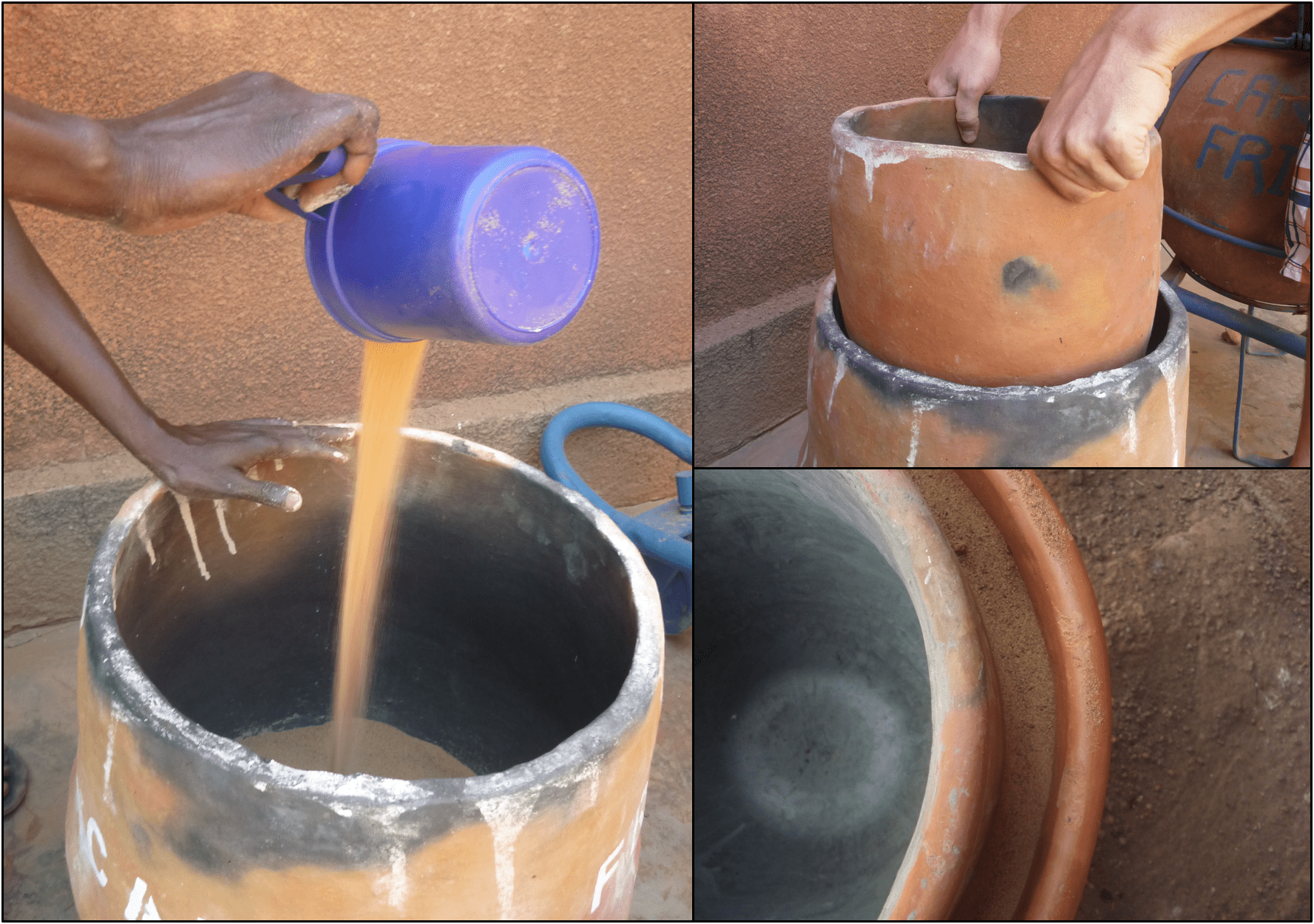
An Inexpensive, Scalable Solution
Along with temperature reduction, evaporative cooling devices provide protection from animals and insects, and increased humidity inside the storage chamber. These benefits significantly improve the shelf-life of common fruits and vegetables, leading to reduced spoilage (money saved), increase access to nutritious food (improved health), and less needed to frequently purchase food (time saved). The devices are easy to make using affordable, locally available materials, like clay pots, bricks, sand, charcoal, wood, dry grass, gunny or burlap sack, and twine. And because they don’t require electricity, they are an environmentally sound refrigeration solution that’s perfect for areas where access to electricity is limited.
Evaporative cooling devices can also be scaled to meet the needs of the user. For individual or family use, a clay pot-in-pot design is a great choice. Commonly known as a “Zeer pot,” this design was popularized in 1995 by Mohammed Bah Abba in Nigeria. Other designs, such as the Mitticool Clay Refrigerator, which is distributed across India, are more expensive but offer customers a more upscale product than a traditional clay pot. In Morocco Evaptainers is aiming to use this same principle but with thin polymer walls rather than clay or brick. But farmers and communities wishing to pool their resources may require something larger. In the early 1980s, Susanta K. Roy and D.S. Khuridiya developed larger capacity evaporative cooling chambers made primarily from brick – commonly known as “zero energy cool chambers” or “ZECCs” – for use by farmers in India. These chambers can store several metric tons of fruits and vegetables.
However, while evaporative coolers can address post-harvest storage issues for many fruits and vegetables, they aren’t a universal solution. They are most effective in arid regions where the weather is hot and dry most of the year. Just as sweat will not cool your body when it is humid, an evaporative cooling device will not cool your vegetables in humid weather. Additionally, it is important to note that evaporative cooling devices are not appropriate for meat, dairy and many medicines – as they cannot reach temperatures low enough to safely store these items.
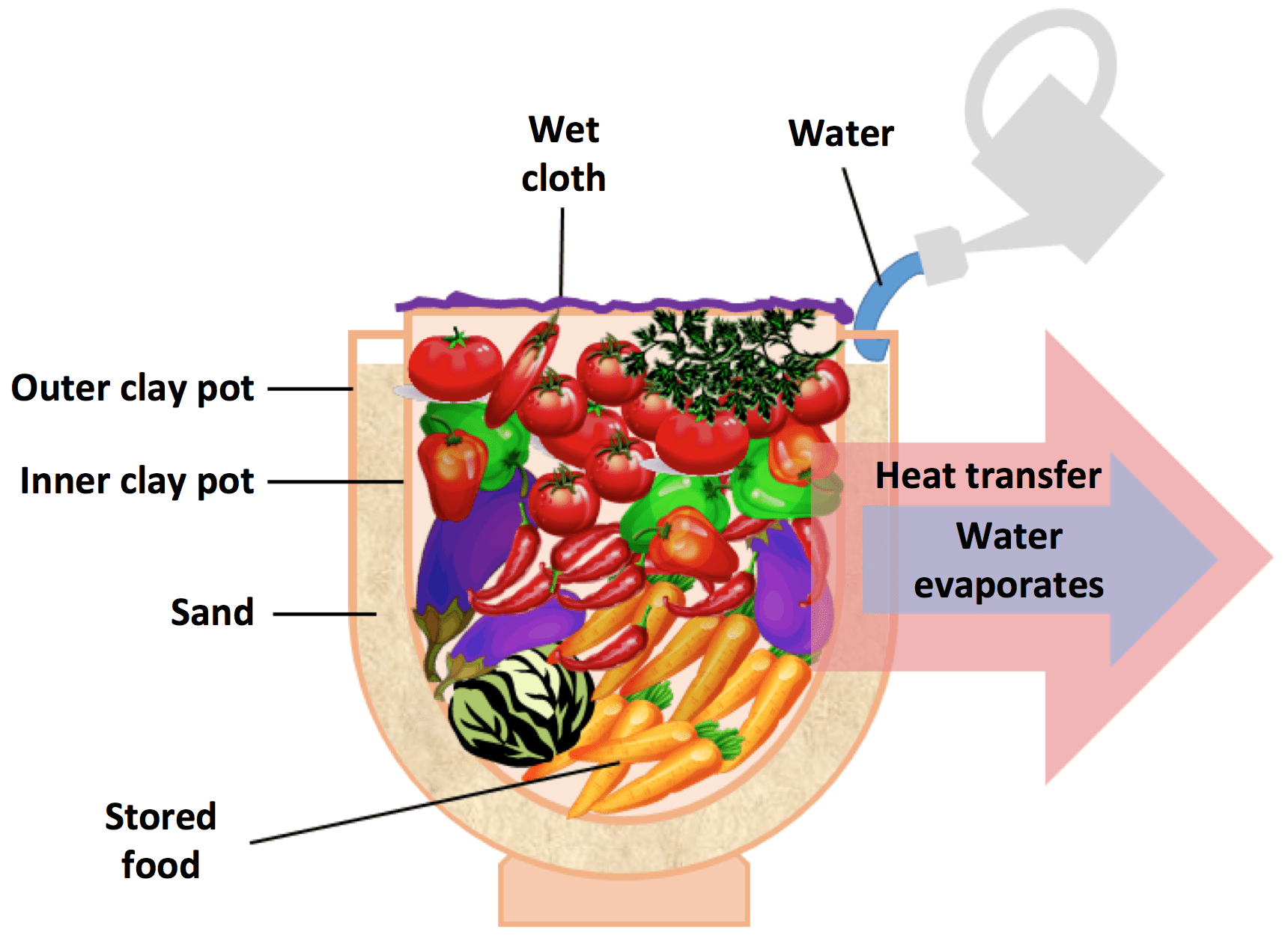
An Opportunity with Tremendous Potential
A report from the Global Knowledge Initiative, lists evaporative cooling technologies among 22 investable innovations with the potential to transform food systems in emerging markets, and as a “quick win” that can be adopted with minimal training and low up-front costs.
Yet, in spite of the benefits that evaporative cooling devices can provide for post-harvest vegetable storage, they are not widely used. What can be done to increase the effective production, dissemination, and usage of this technology?
Following is a list of the five key areas identified by MIT D-Lab that need further development in order to optimize these technologies and dissemination approaches, and to build further evidence for the impact that could result:
- Design research: Research on the design constraints for the most practical, cost-effective, and easily disseminated designs at various scales (household, individual farmer, cooperatives, small businesses, and vegetable markets).
- Suitability scoping: Determine specific areas where evaporative cooling devices can provide the most value.
- Scaleable dissemination strategies: Determine effective strategies for increasing the dissemination of evaporative cooling devices within two main categories a) information dissemination directly to users for DIY construction and/or b) product dissemination by enterprises.
- User behavior and impact research: Build evidence on user behavior and the impact of the technologies, such as reduced food spoilage, increased nutrition, and increased income.
- Establishing a community of practice: Create a community of practice for shared learning and raising awareness.
A Call to Action
Evaporative cooling technology has the potential to improve the lives of people in communities around the world where fruit and vegetable loss is a problem and climate conditions are right for this solution. Investment in developing and researching these technologies and dissemination approaches is critical for increasing confidence among users and development sector actors in the scalability of this work. The sector should be working toward a broad understanding of where and how this technology can be applied, gathering examples of success stories and resources that others can learn from and replicate, and fostering a community of individuals and organizations that can serve as ambassadors for these solutions. Embracing this approach – and mobilizing significant and targeted investment – will result in the dissemination of evaporative cooling technologies at a large scale.
Join the Evaporative Cooling Facebook group to connect with other folks working to disseminate these technologies.
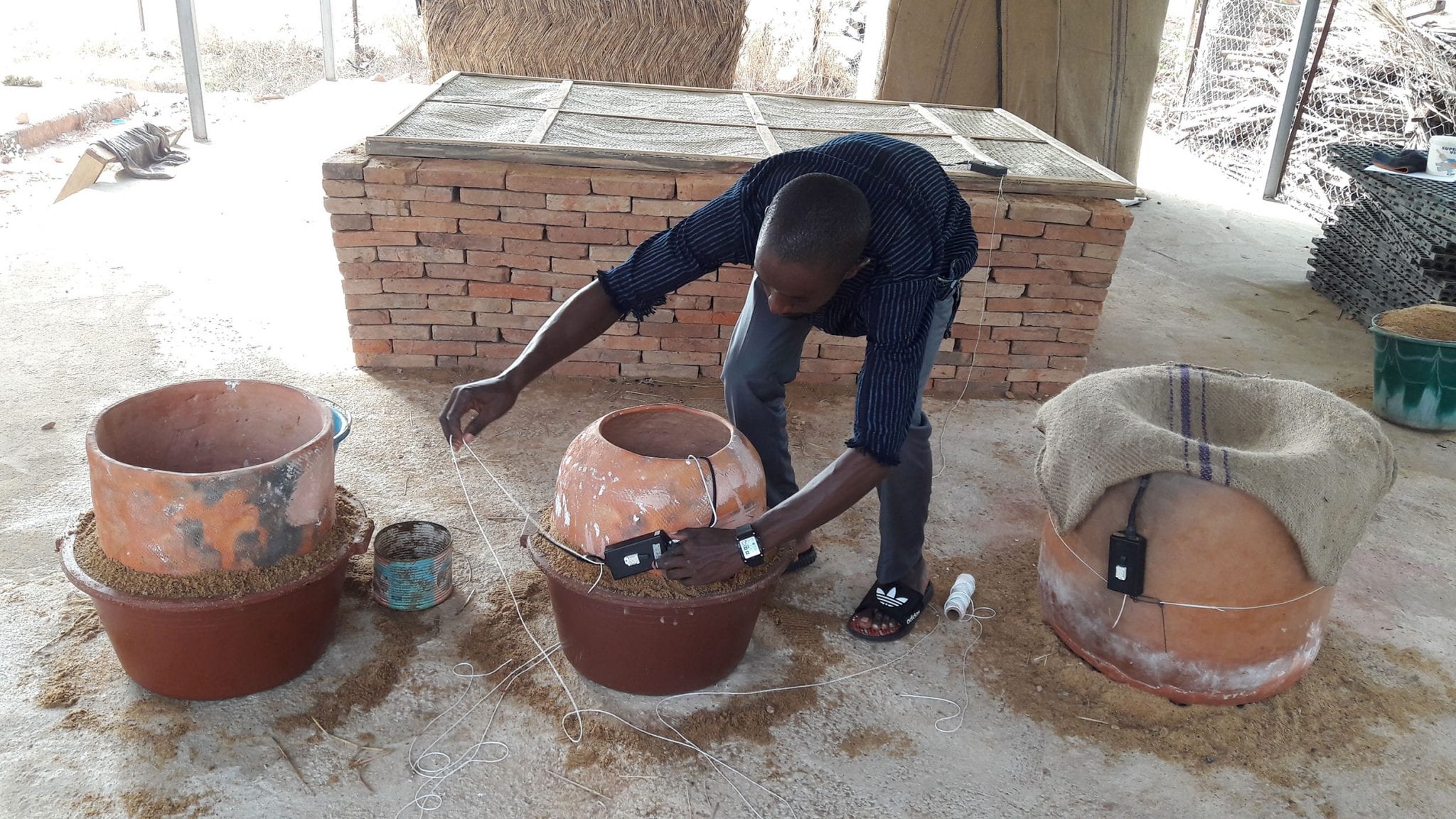
A version of this article was published at NextBillion. Read the original version here.
